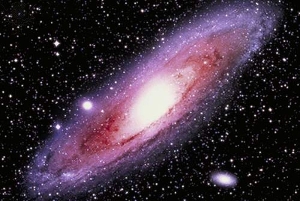Research project
Discover More HyperVelocity Stars to shed light on the Galaxy
Theoretical work that aims at identifying HVSs from Gaia data in a timely manner, constraining their origin, and exploiting them to inform theories of galaxy formation and stellar dynamics around supermassive black holes.

Hypervelocity stars (HVSs) have been discovered in the Milky Way's halo with radial velocities exceeding the Galactic escape speed. These stars were ejected in gravitational interactions taking place close to the supermassive black hole at the Galactic centre. Their origin is still debated, and may point to the presence of a second black hole. However they were formed, their distributions and trajectories provide a new and powerful tool to probe the shape and depth of the Galactic potential, along with the stellar content of the Galactic bulge.
The full potential of HVS observations has not yet been realized, due to the small number of stars so far discovered. This will change in 2017. Gaia will deliver 3-dimensional positions and velocities for about one billion stars, enabling the discovery of a few hundreds of HVSs.
I am undertaking a comprehensive program of theoretical work that aims at identifying HVSs from Gaia data in a timely manner, constraining their origin, and exploiting them to inform theories of galaxy formation and stellar dynamics around supermassive black holes.
As part of this effort, I propose here an innovative PhD thesis where the student will develop, test and apply new astrometric methods to build a larger and less biased sample of HVSs from Gaia data and the spatially complementary ESO's VVV survey (final release in 2016). To extract physical information, he will finally adapt and apply statistical methods to fit the data."

 Physical Sciences TOP-Grants for curiosity-driven research, module 2
Physical Sciences TOP-Grants for curiosity-driven research, module 2